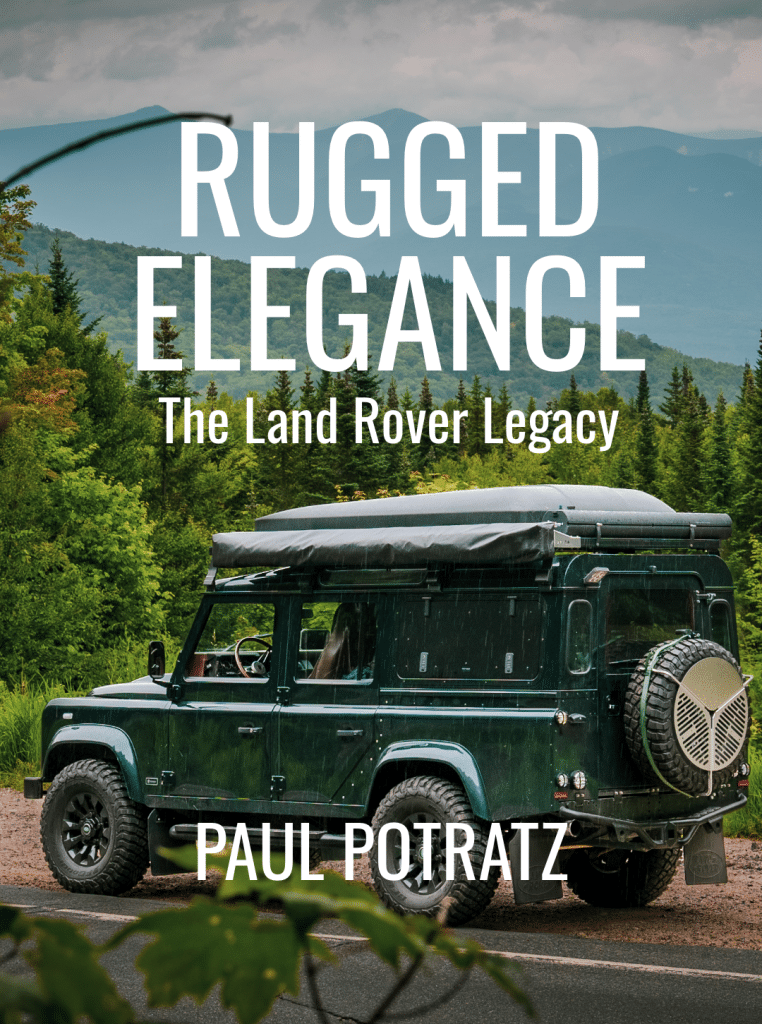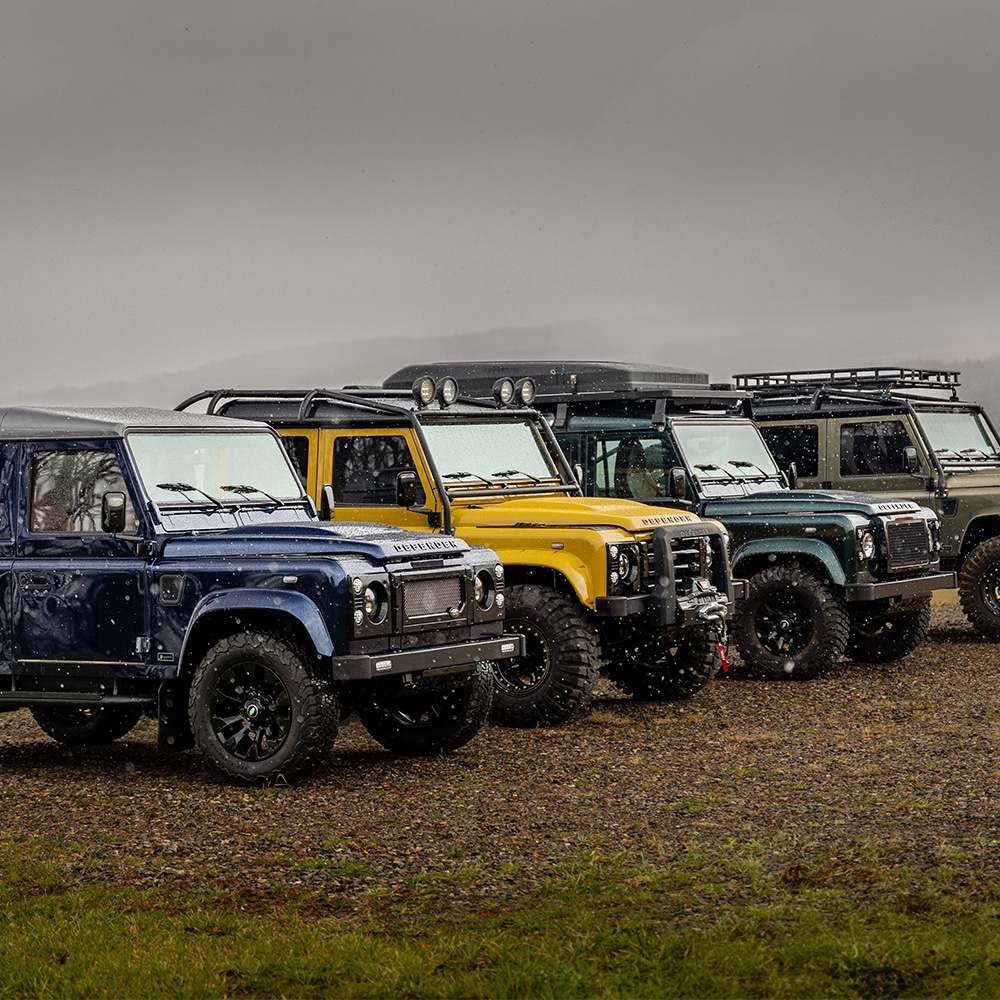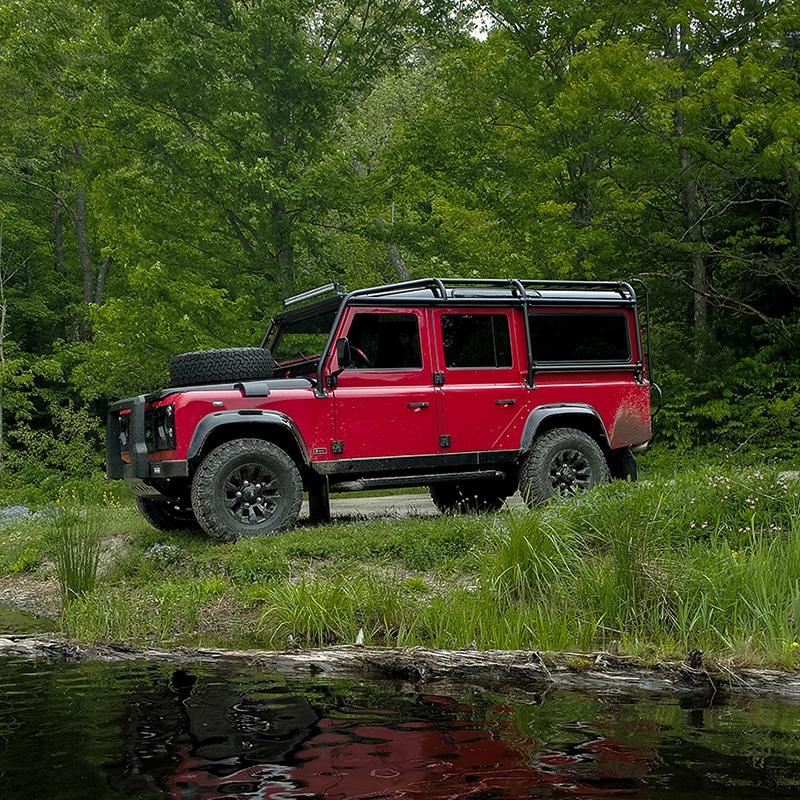Introduction
From the moment I turned the pages of my first National Geographic magazine, a gift from my grandmother on my fifth birthday, I was captivated. The images of distant lands, exotic animals, and untamed wilderness were more than just photographs; they were windows to a world I yearned to explore. But there was something else in those pages that caught my young eye and never let go – the Land Rover, especially the Land Rover Defender.
It was more than just a vehicle; it was a symbol of adventure and freedom. The rugged looks of the Defender, with its boxy frame and stoic stance, seemed to echo the call of the wild that resonated deep within me. It wasn’t just how it tackled any terrain with ease – though that was certainly part of the allure. It was what the Defender represented: the ability to escape the ordinary and venture into the unknown.
In every issue of National Geographic, as I flipped through the adventures of photographers and explorers, the Defender was there, a constant companion in their journeys. It stood out, not just for its functionality but for the dreams it embodied. The Defender wasn’t just a vehicle; it was a gateway to a life of exploration, a tool for the intrepid, and a companion for the free-spirited.
To my young mind, the Land Rover Defender was more than a means of transport; it was a vessel for adventure. It symbolized what it meant to be rugged, free, and independent. Each image of the Defender traversing deserts, forging through rivers, or parked amidst a wild landscape was a siren song calling me to a life of exploration.
But my connection with the Defender went deeper than admiration; it was emotional. The sight of it stirred something in me, a longing to be behind its wheel, roaming the Earth in search of the unknown. It became my dream to capture the beauty of the wild through the lens of a camera, with a Defender as my steadfast partner. The Land Rover Defender, in its essence, became a tangible representation of my dreams and aspirations.
As I grew older, the fascination only deepened. The Defender was no longer just a childhood fantasy; it became a symbol of what I wanted in life – the freedom to explore, to discover, and to live boldly. This vehicle, which I first saw in the pages of National Geographic, became a lifelong obsession, a beacon of adventure, and a reminder that there are still uncharted territories waiting to be explored.
Now let me share some stories with you about what is one of most iconic vehicles in the world…The Land Rover and more specifically the Classic Defender. If one would say I have a serious attraction to Land Rover and specifically the Classic Land Rover Defender they would be correct.

Chapter 1: The Adventurous Beginnings
In the aftermath of World War II, the world was in a state of reconstruction, and the automotive industry was no exception. Amidst this backdrop, the story of the Land Rover began – a tale not just of a vehicle’s creation but of ingenuity borne from necessity.
The Rover Company, known for its luxury cars, faced a stark post-war reality. Steel was in short supply, and the company needed a new direction to survive. It was in this environment of hardship and resourcefulness that the Land Rover was born. Maurice Wilks, Rover’s chief designer, played a pivotal role. Inspired by the American Willys Jeep he used at his farm in Anglesey, Wilks envisioned a utility vehicle that combined robustness with versatility.
One of the most charming aspects of early Land Rovers was their color. The paint used on these vehicles wasn’t chosen from a designer’s palette but was surplus supplies from aircraft manufacturers, left over from the war. It was practical and symbolic at the same time – a nod to the vehicle’s utilitarian roots and a reminder of its post-war genesis. This meant early models were often seen in various shades of green, a hue that became iconic to the Land Rover brand.
Wilks and his team faced numerous challenges in designing the first Land Rover. They needed a vehicle that was tough enough to handle the rough British countryside yet simple enough to be maintained by farmers and everyday folk. The result was the Land Rover Series I, introduced at the Amsterdam Motor Show in 1948. Its boxy shape, lightweight aluminum body (a choice made due to steel shortages), and 4×4 capabilities were revolutionary.
There are stories of early Land Rovers being so versatile that they were used for everything from farm work to emergency services. It wasn’t uncommon to see a Land Rover towing livestock, assisting in a medical emergency, or traversing landscapes where other vehicles couldn’t dare to go. This adaptability was a significant factor in its early success.
One particular anecdote that stands out is about a farmer who used his Land Rover not just for agriculture but also rigged it up to power machinery. The vehicle’s power take-off feature meant that it could be used to operate saws, winches, and other equipment, making it an indispensable tool for rural life.
In these early years, the Land Rover wasn’t just a vehicle; it was a lifeline for many in Britain’s rural communities. Its creation was a victory of innovation over adversity, a testament to the resilience and ingenuity of its makers. This spirit of adventure and versatility would become the cornerstone of the Land Rover’s identity, defining its legacy for decades to come.
As the Land Rover began to cement its reputation as a robust and versatile vehicle, it unexpectedly crossed over into a new realm: becoming a popular family vehicle. This transition was as remarkable as it was unplanned, reflecting the vehicle’s inherent qualities that appealed to a much wider audience than its creators had originally anticipated.
The practicality of the Land Rover was unmatched. Its dependability was a key factor in its growing popularity. It was known for its reliability in all conditions, whether navigating the muddy lanes of the English countryside or the rugged terrain of African savannas. This reliability was not just a matter of pride for its owners but a necessity for many who depended on it for their daily livelihoods and safety.

Land Rover Simplicity and Repairs
Another appealing aspect was its simplicity in design, making it easy to work on. Owners often found they could perform most repairs themselves. This DIY-friendly nature was a significant advantage, especially in remote areas where professional service stations were scarce.
Fuel efficiency was another unexpected but welcome feature of the early Land Rovers. In a time when fuel economy was starting to become a consideration for vehicle owners, the Land Rover stood out as an economically viable option.
Driving a Land Rover offered a unique experience. Its elevated seating position provided drivers and passengers with a 360-degree view of their surroundings, an aspect that not only enhanced the driving experience but also added to its safety features. This panoramic visibility made it ideal for scenic drives and adventurous excursions, further enhancing its appeal to families and explorers alike.
The story goes that Rover Company had not fully anticipated the widespread appeal of the Land Rover. Initially designed as a stop-gap product to address the immediate post-war needs, it quickly outgrew its intended purpose. Its popularity soared, capturing the imagination of a diverse range of users, from farmers and soldiers to families and adventure enthusiasts.
This unexpected success story did not go unnoticed in the automotive world. Other manufacturers began to take note of the Land Rover’s design and its burgeoning market. Attempts to replicate or draw inspiration from its design were inevitable. Competitors saw the functional design, the off-road capability, and the growing market segment as an opportunity.
One such story involves a rival manufacturer who allegedly purchased a Land Rover to dissect and study, hoping to capture some of its magic. However, they soon realized that the essence of the Land Rover was more than just its physical design; it was the ethos behind it – a combination of practicality, reliability, and a unique driving experience that was hard to replicate.
As the Land Rover continued to grow in popularity, it became clear that it was more than just a vehicle; it was an icon in the making. Its ability to transition seamlessly from a utility vehicle to a family car, and the affection it garnered from a wide range of people, was a testament to its unique place in the automotive world. This versatility and universal appeal laid the foundation for its enduring legacy, a legacy that would continue to evolve and captivate generations to come.

Land Rover as a Daily Driver
This burgeoning appeal of the Land Rover, especially in the family sector, was a reflection of the changing dynamics of post-war society. Families began to embrace outdoor lifestyles more enthusiastically, and the Land Rover fit perfectly into this new paradigm. It was not just a mode of transport; it was a vehicle that promised adventure and an escape from the everyday. This resonated deeply with a populace eager to explore and experience more of the world around them.
The Land Rover’s rugged charm started to symbolize a certain lifestyle – one of resilience, exploration, and a touch of elegance in the face of rough terrain. It was a vehicle that could be seen parked in the driveways of suburban homes as comfortably as it could be spotted navigating through rocky mountain paths. Its versatility was unmatched, and this ability to traverse diverse environments and social settings further solidified its status.
As the popularity of the Land Rover surged, it began to forge a cultural identity of its own. It was no longer just a product of the Rover Company; it had become a cultural icon, representing a spirit of adventure and freedom. This iconic status was not lost on Rover, who began to capitalize on this image, marketing the Land Rover not just as a vehicle, but as a lifestyle choice.
In this context, the Land Rover started appearing in more mainstream media, featured in advertisements, movies, and television shows, further embedding it into the popular consciousness. It became synonymous with exploration, often used in expeditions and scientific research ventures, which added to its mystique and allure.
The Land Rover’s journey from a utilitarian post-war vehicle to a beloved family car and a symbol of adventure is a remarkable story of adaptation and appeal. It showcases how a product, initially designed for practicality, can evolve beyond its intended purpose, capturing the hearts of people across different walks of life. This evolution was a testament to the Land Rover’s fundamental strengths – its reliability, versatility, and an inherent ability to connect with people on a personal level. As it continued to evolve, the Land Rover would go on to cement itself not just as a vehicle, but as a pivotal part of automotive history and culture.



